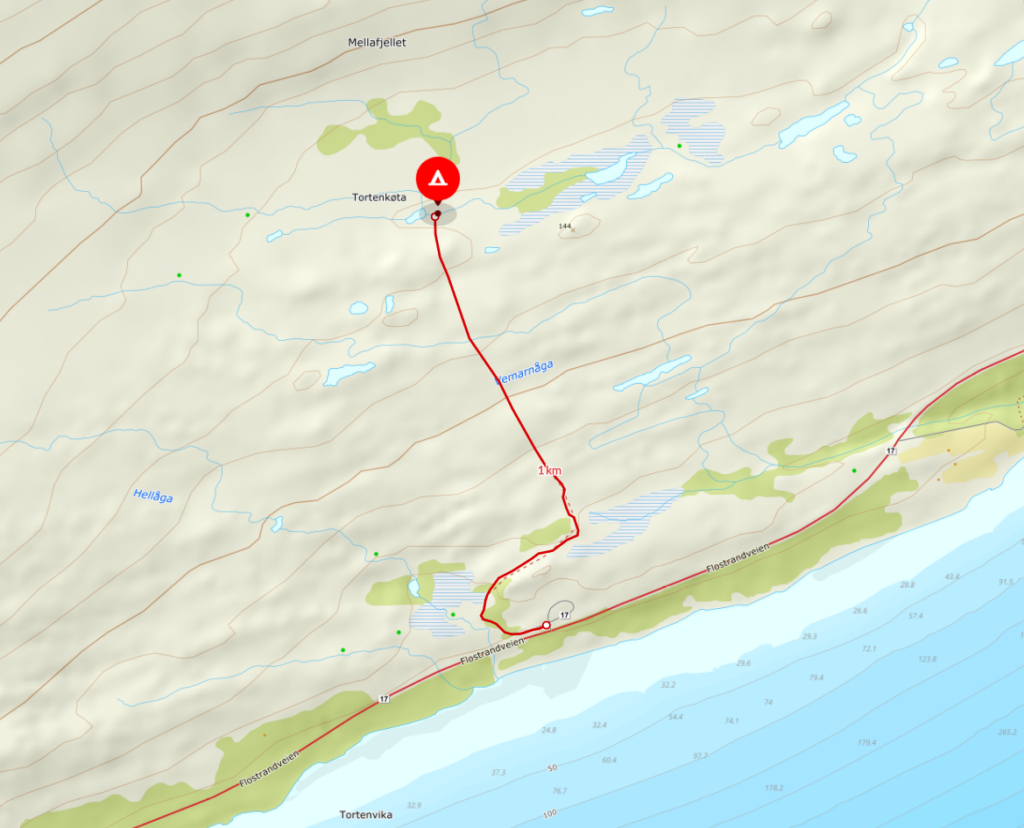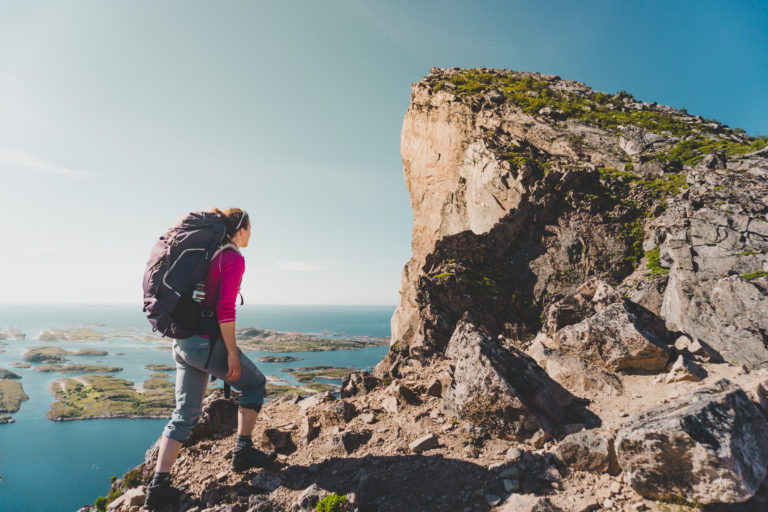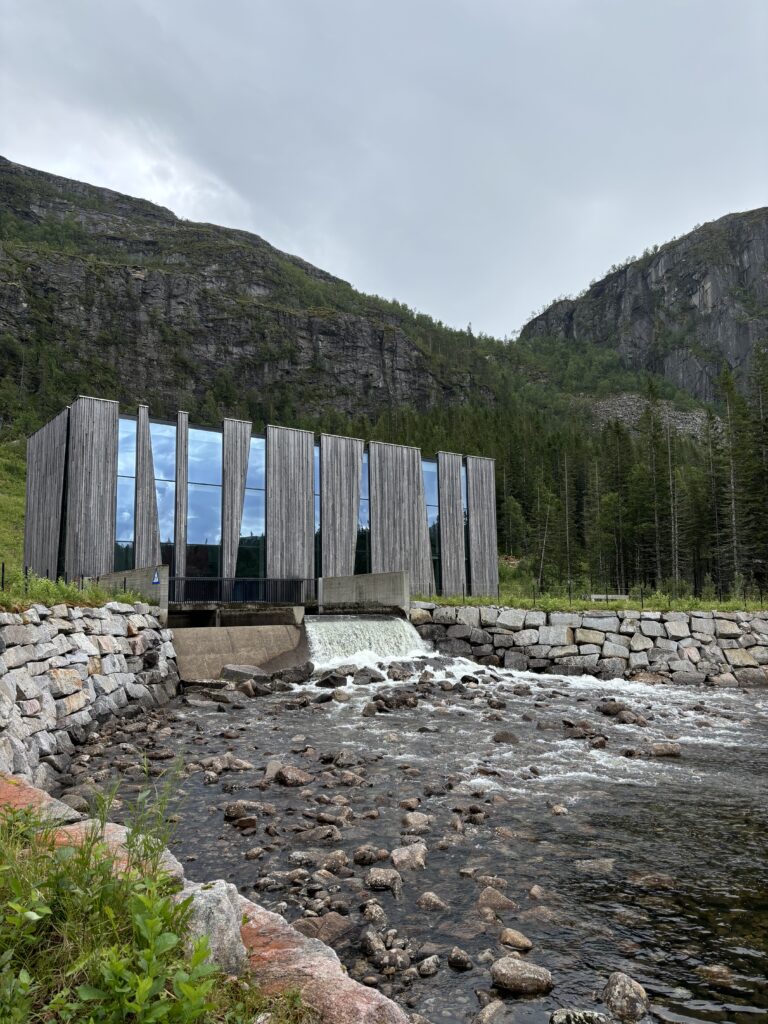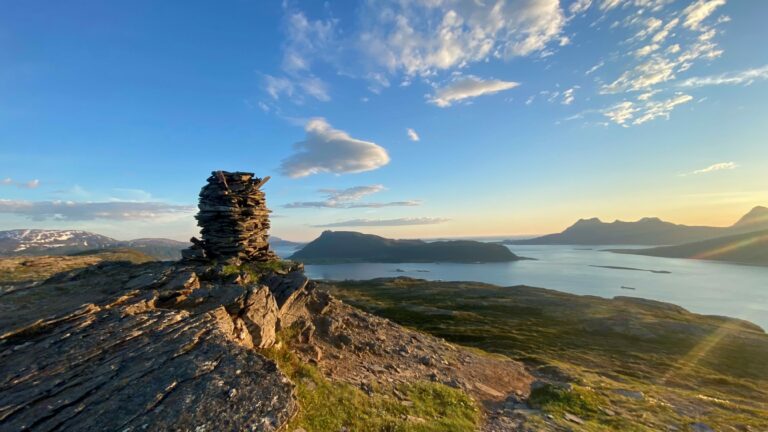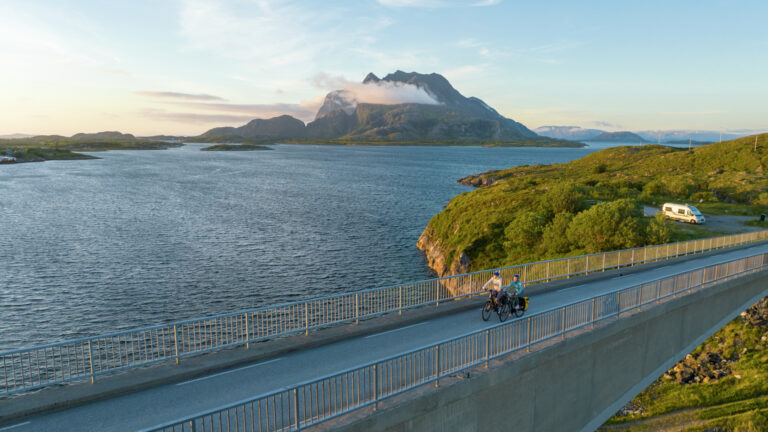A hiking adventure: Tortenkøta
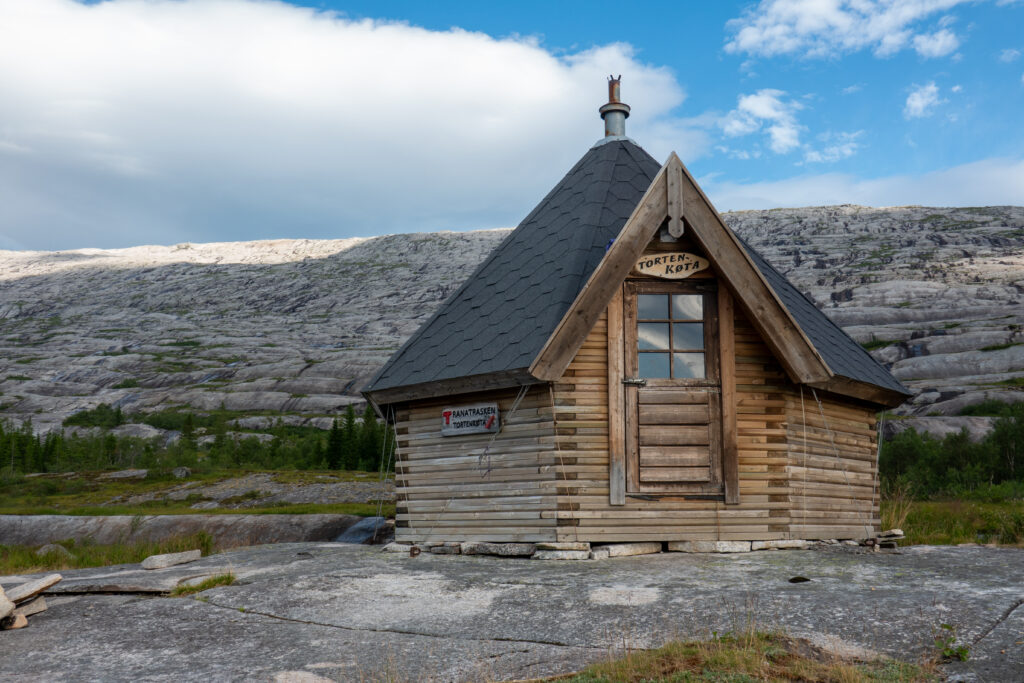 Kitt Grønningsæter
Kitt GrønningsæterThe hike to Tortenkøta is an easy and family-friendly walk along the Coastal Route (Kystriksveien) near Flostrand. By the shelter, you’ll find small pools and natural rock slides — a great place for the family to swim and relax.
Key info
Difficulty: Easy
Distance one way: 1.6 km
Elevation gain one way: 120 metres
Time one way: 30 minutes
Season: May – October
View starting point on Google Maps
Hike descriotion
Tortenkøta is a great day trip for families. The shelter is located near Flostrand in Rana Municipality. The trail is well-marked from the parking area, which is also a popular spot for wild camping with tents or campervans.
The trail runs through gently rolling terrain, mostly over bedrock. It can be a bit wet in places after rain. Tortenkøta is open to the public and equipped with a wood stove and firewood. It does not have beds or accommodation facilities. Dogs are allowed. The shelter is owned and maintained by DNT Rana og omegn (the local trekking association).
The area around the shelter has many small pools that are great for swimming in summer. On sunny days, the water warms up as it flows across the sun-heated rock.
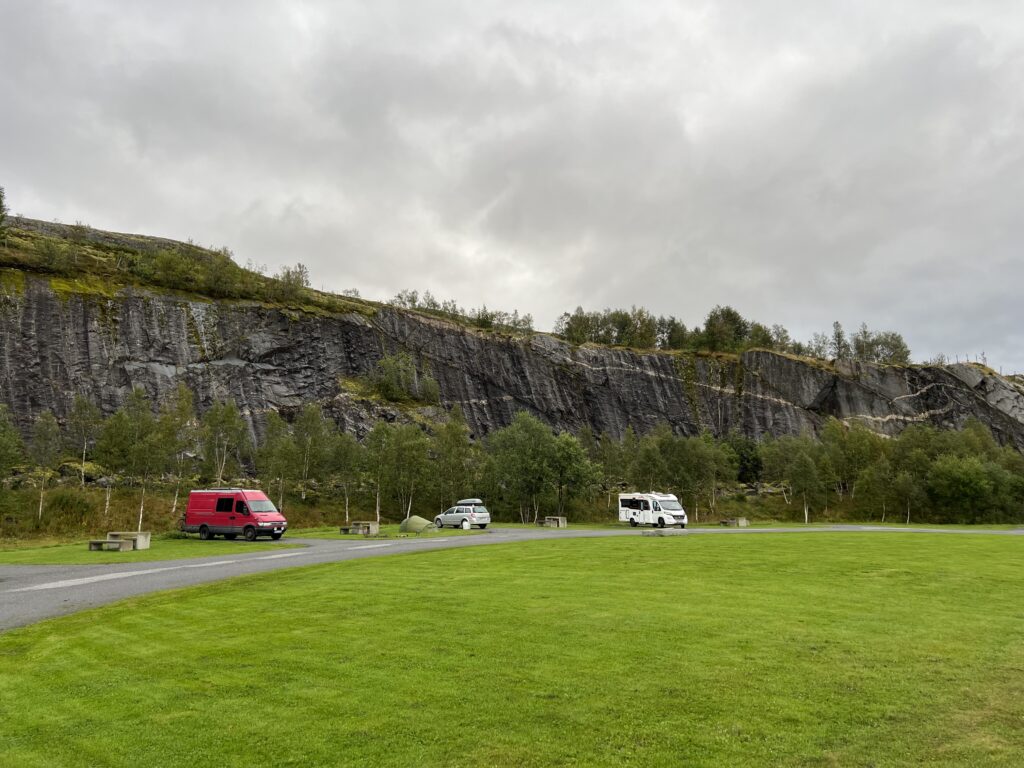 Kristin Johansen
Kristin Johansen
 Kristin Johansen
Kristin Johansen
 Kitt Grønningsæter
Kitt Grønningsæter
From Tortenkøta, you can continue on to Tortenviktinden (1,027 m), where you’ll get panoramic views of the Helgeland coast. This is also a popular summit for ski touring in winter.
Just a few minutes away by car is the popular Hellåga Rest Area, which is part of the National Scenic Route Helgelandskysten. From the rest area, there are stairs and paths leading down to the sea — a popular spot for shore fishing. During the summer season, toilets, drinking water, and a waste disposal station are available.
1. Follow the Norwegian Mountain Code and plan according to your ability and equipment
Short hikes on easy terrain don’t require much. If you’re heading out for an hour or two in the lowlands and not gaining much elevation, you won’t need a lot of gear or be in top shape. If it gets cold or you get tired, you’re usually not far from your car.
But if you’re heading into more challenging terrain—steeper, rougher, and above the treeline where the weather is more unpredictable—you’ll need to be better prepared. You should plan the trip based on weather and conditions, be fit enough to complete it, and be ready for uneven ground, boulder fields, slippery roots, and stream crossings. That means carrying a heavier pack with extra clothes and gear, and wearing sturdy hiking boots that support your ankles.
If you’re unsure about taking on a demanding mountain hike, start with an easy or moderate one and see how it feels.
Learn more about the Norwegian Mountain Code at rodekors.no
See what you should bring on your hike on VisitNorway.com
2. Stick to marked trails
A shortcut through unfamiliar terrain can easily turn into a long and difficult detour. What looks like a trail might just be a sheep path that leads you somewhere completely unexpected. If you want the hike to be as easy or challenging—and as long or short—as planned, it’s best to follow marked trails.
If you’re heading off-trail, it’s smart to follow a GPS track. You can download a GPX file from a hike description and use it on a GPS device, a smartphone app, or a GPS watch.
UT.no and the UT app offer hike descriptions with GPS tracks. If your hike doesn’t have one, you can upload a track to ut.no/mine-turer and access it in the app. It’s free, but you’ll need to create an account.
Always carry a map and compass as backup.
UT app for Android / UT app for iPhone
3. Talk to locals or join a guided hike
Locals often have useful tips about your planned hike. They can tell you where to park, whether there’s phone coverage, if the trail is wet, if rivers are high, or suggest a better alternative. Talk to the people where you’re staying, at the local tourist office, or other hikers on the trail—you might get some truly valuable advice.
The best option is to hike with a guide. You can join a group tour or book a private guide. These are experienced locals who know the area well. They’ll help tailor the hike to your needs and share insights that add to the experience.
4. Look out for cultural landmarks
Even high up in the mountains, you’ll find traces of past human activity—some hundreds or even thousands of years old. These can include ancient trail markers, signal cairns, hunting fences, huts, and shepherd shelters. If you spot something interesting, check the KulturPunkt app to see what it is—or use the app to find a cultural site as your hiking goal.
KulturPunkt app for Android / KulturPunkt app for iPhone
KulturPunkt.org
5. Remember your responsibilities under the Right to Roam
Norway’s Right to Roam means you can hike, bike, pick berries, camp, fish, and ski almost anywhere in nature. But it also comes with responsibilities—what we call the “duties of the Right to Roam.” Leave no trace, respect wildlife, and know the rules for hunting, fishing, cycling, and access in protected areas like national parks and nature reserves.
Read more about the Right to Roam and your responsibilities at VisitNorway.com
Thank you for respecting the local communities, and for helping us preserve the natural beauty of Helgeland!
Please:
- Strive to leave no trace of your visit. Bring back all your rubbish, including used toilet paper, and discard it in the nearest rubbish bin.
- Plan your toilet visits and use the opportunity when you pass a toilet. In the wilderness, make sure you are not a nuisance to others.
- Respect the local wildlife. Keep a good distance from wildlife, livestock and birds. Keep your dog leashed.
- Respect private property. Keep a respectful distance from houses and cabins.
- Show good boating sense. Keep a good distance from shore and drive at a low speed, especially when you are close to anyone or anything on the water, including birds or animals. Avoid loud and disturbing engine noise. Be aware that some islands and nature reserves are important nesting sites, and that going ashore is prohibited during the nesting season.
- Follow the Norwegian Mountain Code (Fjellvettreglene). Plan your excursion according to the weather forecast, your skills and experience.
- Join a guided excursion or consider hiring an experienced guide, especially when you don’t have sufficient experience or knowledge to guarantee a safe trip.
Find accommodation, food, and activities nearby
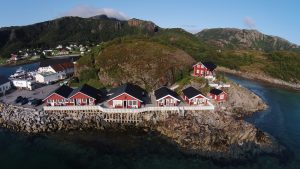
Oscarbrygga – Accommodation and dining
OscarBrygga at Tonnes offers accommodation in rorbu cabins or wharf rooms, right on the shore. From your balcony, you can enjoy the sunset or the glow of the midnight sun, to the soothing sound of the surf. Dining is offered in a refurbished old wharf building rich in ambience.
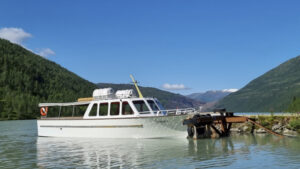
Boat to Austerdalsisen glacier – Svartisen in Rana
Looking for a unique nature experience? Austerdalsisen, Svartisen is located just north of Mo i Rana. Svartisdal takes you by boat across Svartisvatnet so you can witness this spectacular glacier.
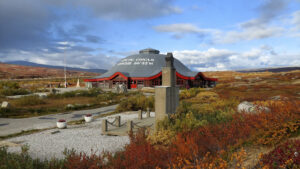
Arctic Circle Center- Souvenir shop and bistro by the Arctic Circle
With food service and a large souvenir shop, the Arctic Circle Center is a natural stopping point on your journey across Saltfjellet and the Arctic Circle.

Skillevollen Sports Park
At Skillevollen Sports Park there’s so much to do for you who love being active outdoors, either if you’re coming by yourself or together with your family, and bring your cross-country skis, ice skates, or sleds. Here you can also find alpine slopes and a biathlon stadium.
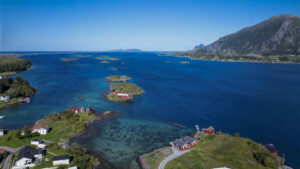
Lurøy Rorbuer
Enjoy long, bright summer days or a beautiful winter visit to Onøy and Lurøy. Experience island life, coastal culture, and scenic hiking areas. Go kayaking in the sheltered archipelago, visit neighbouring islands like Lovund, Træna, and Hestmannøy — and end the day with the evening sun by the pier or a quiet moment in the sauna.
